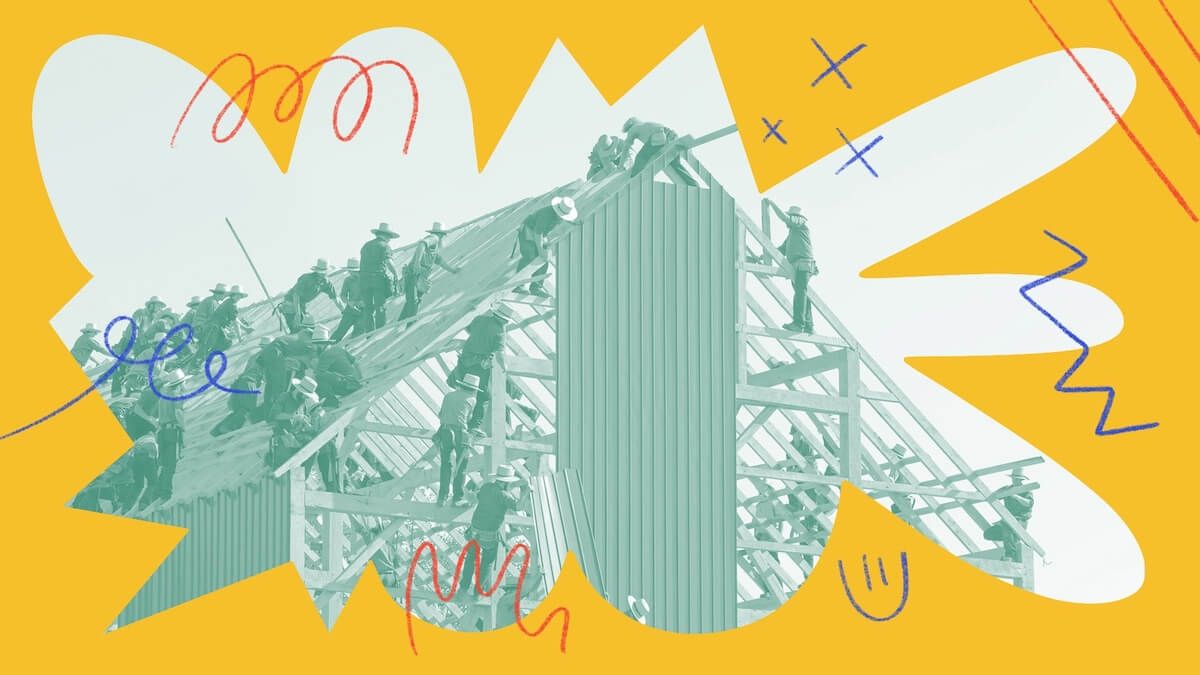5 questions to build your own goal-setting framework
OKRs are great but a simpler language might be best for your team. See 5 questions that can help you build your own goal-setting framework.

I find myself wanting to unlearn business jargon and think from first principle.“Network effects” are great, but it’s most important to startups on how to start from zero and to build them. OKRs are great, but what’s the right template for a 5 person team?
— Andrew Chen (@andrewchen) September 1, 2019
"OKRs are great, but what's the right template for a 5 person team?"
— Andew Chen, VC @ A16Z
I loved that question because it's at the core of what we do. The OKRs framework is an excellent tool, but it's not the only way to get your team aligned.
Heck, we don't use OKRs at Tability. We tweaked it to make our own by focusing on these questions:
- What's our long-term purpose? (vision)
- What mid-term outcomes should we focus on? (strategy)
- What are our best bets to get those outcomes? (roadmap)
- How are we tracking on these bets? (progress)
- Do we need to do things differently? (agility)
1. What's our long-term purpose?
Your purpose is why you exist as a team. It should be something inspiring that will take years to accomplish. It should also open avenues of creativity.
A good mission statement will help your organization find new markets and grow beyond the existing products.
Tesla's mission statement is "to accelerate the world's transition to sustainable energy.". That's a powerful phrase that does not limit them to cars. It expands their reach significantly, and it's not hard to picture them working on it 50 years from now.
Purpose can also be defined at a team level. The engineering team at Mailchimp wrote their own mission statement: "We give marketers production-ready software designed to help them grow". That's a simple template to follow. You need to clearly define:
- Who you're targeting: marketers.
- The benefits: helping them grow.
- How: via production-ready software.
You can fill in the blanks below to write your mission statement.
We exist to help <who> do <what> so they can <benefits>.
2. What mid-term outcomes should we focus on?
A purpose can be dangerous if you leave it by itself — its vagueness is prone to dilute efforts. So the next step is to define a set of focus areas for the next 12-18 months.
Rather than listing features, you need to think about impact. Amazon famously writes press releases before building new products. They start by painting the future, and work backwards to see how they can get there.
Similarly, your outcomes need to form a great story. What will your customers be able to do next year? What does success look like?
That's when you should start outlining the core KPIs that you will track. They will be critical to make sure you can answer question #4.
3. What are our best bets to get those outcomes?
Here you're defining the roadmap. You're dividing your vision into smaller capabilities that you can deliver to your customers. Some features will take a couple of days, other projects will take a few months. But the whole should get you closer to the outcomes you have defined in question #2.
Try to stay away from timeline formats. Estimations are costly and often wrong. It's easier to focus your efforts on defining the priorities and time horizons.
- What are we doing right now?
- What should we start preparing next?
- What are the best candidates for the future?
4. How are we tracking on those bets?
Often time we limit the tracking to whether or not a feature has been released. But that can be harmful — while it shows that we're doing some work, it doesn't tell us if we're doing the right work.
The real question should be:
"Are the bets moving the needle?"
That's why it's important to define success metrics upfront. Draw clear lines in the sand and make sure that you know where you're starting from as well as where you want to go.
5. Should we do things differently?
This final question goes together with the previous one. Keeping an eye on your bets will make your business more agile. It's about finding the best ways to make reality match expectations.
It might be that you change the scope of a project, or that you tweak the implementation details. Sometimes, it will mean dropping an investment. But you can't do that unless you're clear on your objectives.
Be aware of not having knee jerk reactions to bad statistics. Being agile doesn't mean changing your plans every other day — your team needs a solid structure and commitment to perform.
Build your own by repeating the questions
A framework like OKRs provide you a way to answer questions #2, #3 and #4. But you can build your own outcome-driven process by making sure that you're reviewing things periodically.
- Every year: What's our long-term purpose?
- Every quarter: What mid-term outcomes should we focus on?
- Every month: What are our best bets to get those outcomes?
- Every week: How are we tracking on these bets? Do we need to do things differently?
You can start with that no matter what your team size is. And you can then borrow and adapt from known practices to design something that will be a good fit for your organization.
At Tability we have named our framework GOAT 🐐, which stands for GOals And Themes — but it's really because I like the goat emoji.

